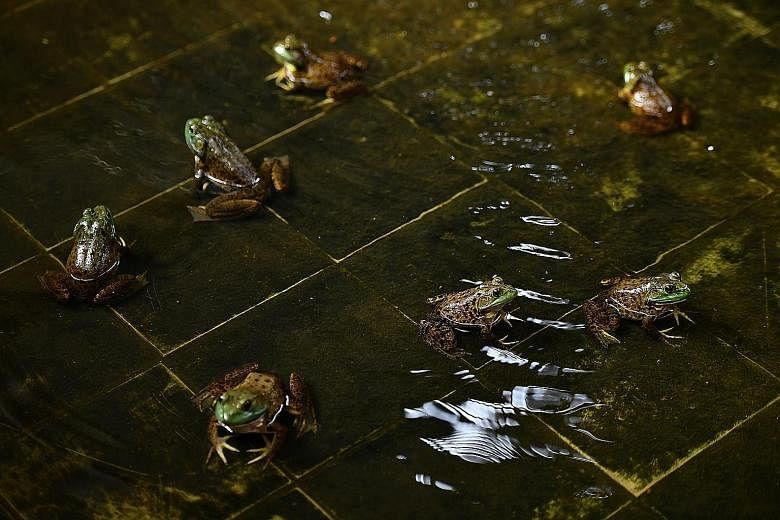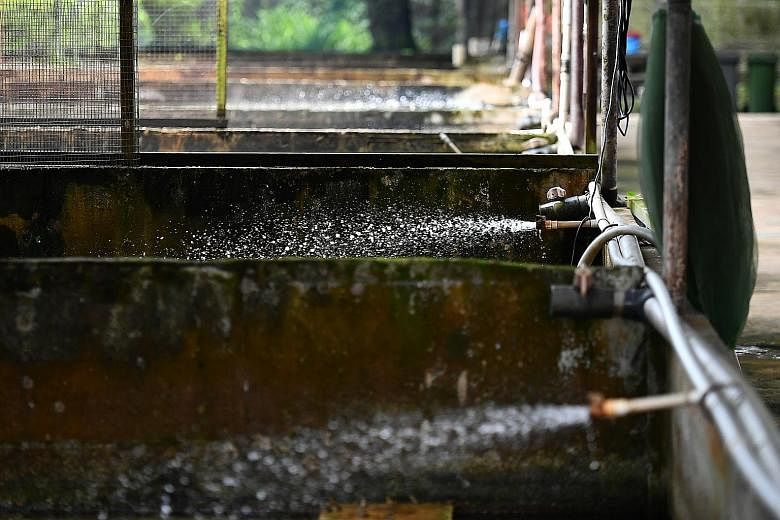The recent spate of natural disasters around the world is symptomatic of climate change.
Singapore may not be directly hit by the likes of tropical cyclones that have raked other parts of the world, but scientists worry that the country could be affected in other ways.
Of primary concern to land-scarce Singapore is food.
As climate scientist Benjamin Grandey from the Singapore-MIT Alliance for Research and Technology notes: "Agriculture is sensitive to weather conditions. Climate change may impact food supplies... Due to trade, we live in a very connected world."
Now, the authorities here are looking at how local farms can adopt technology to deal with climate change, and boost productivity. For instance, bids for new farmland in a tender released in August will be evaluated, among other things, on a farmer's ability to harness innovation to improve and sustain production.
But not all farms - especially those with niche markets - will find it easy to adopt technology.
At Singapore's only American bullfrog farm, in Lim Chu Kang, water constantly spurts out of pipes into dozens of concrete tanks on the 1.2ha farm. This constant circulation of water, which comes from a well and reservoir on the farm's premises, keeps the water fresh.
But Jurong Frog Farm's lease ends in 2021, and there is no guarantee that any future site - if the farm is successful in its bid for new land-would have such a water source.
Farm director Chelsea Wan, 33, says technology in the form of a recirculating aquaculture system - a system used in many fish farms which involves one stock of water that is continuously treated and re-used - could help.
But this system requires further customisation for a frog farm, and could cost hundreds of thousands of dollars. Initial sums show the investment would be far too costly for a farm with a niche market like hers, said Ms Wan.
"Even with government subsidies at implementation, the running cost of such a system might force us to eventually pass on costs to customers, who may simply turn to other farms in the region, which have plenty of land and water."
Ms Wan is now looking into alternative solutions, such as establishing contracts with farms in countries that have more abundant natural resources for a supply of baby frogs, and collaborating with researchers to see if more value can be harnessed from other parts of the frog, such as its fats.
The farm supplies live frogs and frog meat to restaurants, supermarkets and wet markets, as well as hashima - a delicacy made from the oviducts of a frog.
Besides economic considerations such as those faced by Jurong Frog Farm, the move to go high-tech will have its own teething problems.
While local production of fish has been growing steadily from 2012 to 2015, output fell from 5,272 tonnes in 2015 to 4,851 tonnes last year. "This may be due to temporary production disruptions as some of our larger coastal fish farmers were changing their production management systems or re-constructing net cages to improve overall production in the longer term," said a spokesman for the Agri-Food and Veterinary Authority.
The hope, as she noted, is that new technology, such as the use of sensors and robotics to automate tasks like net cleaning, can increase the productivity of fish farming systems by three times or more.
Fish and vegetable farming are developed industries worldwide. Local farms have started adopting best practices from other agricultural nations, such as Norway.
Fish farms here are starting to move towards closed containment systems to keep algae blooms from killing fish. Some vegetable farms have also moved indoors to better control the effects of weather.
Dr Koh Poh Koon, Senior Minister of State for National Development, who is in charge of farming issues, said in a Facebook post last month: "We cannot control the weather. But we can control how we want to manage the risks. I urge all our farmers to work together with government agencies to transform our farming sector into a more resilient and productive one. Your long-term viability and our food security are intertwined."



